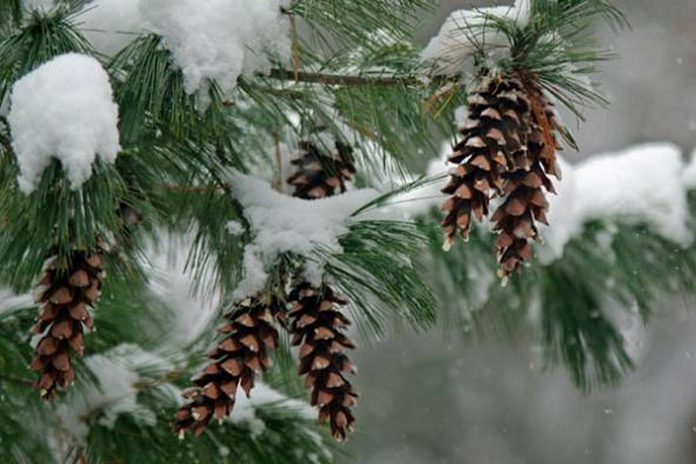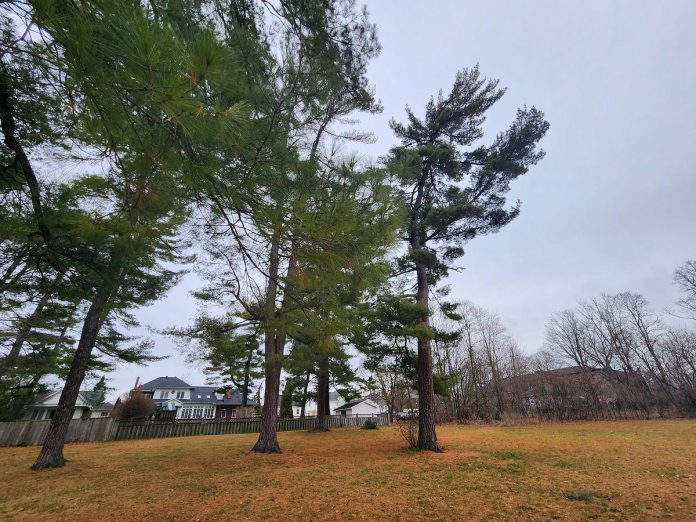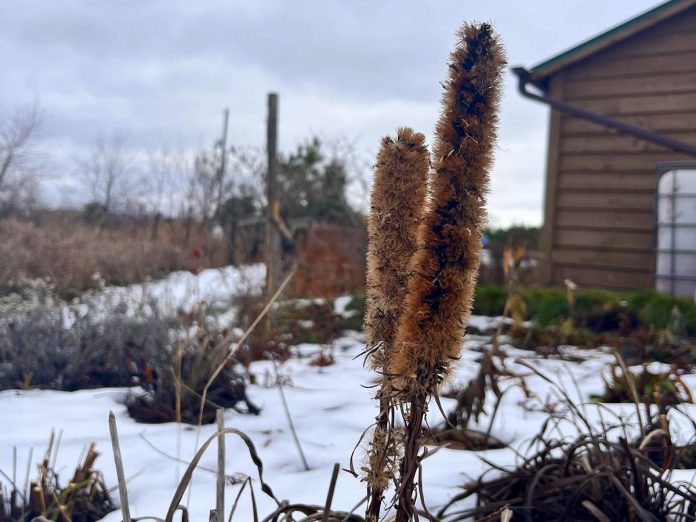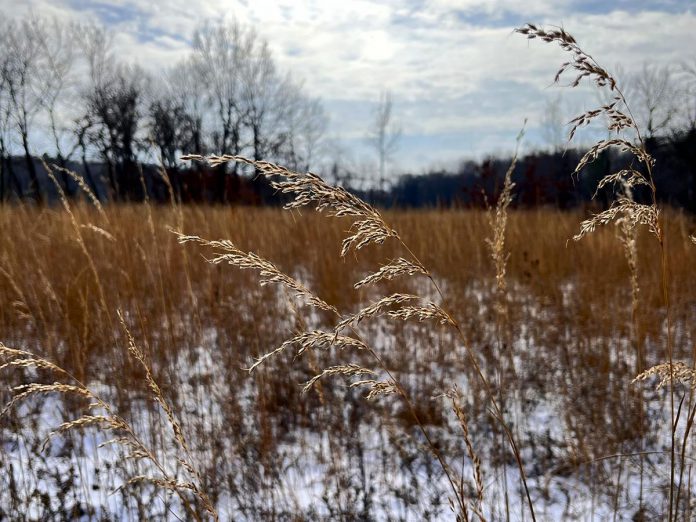
Are you looking for an enjoyable and affordable outdoor winter activity? Get to know native plants that provide visual interest and ecological value all year-round.
Here are four cold-season favourites chosen by plant-savvy staff at the City of Peterborough and Alderville Black Oak Savanna.
Eastern white pine (Pinus strobus) is a winter favourite of Nicky Partridge, urban forest technologist with the City of Peterborough.
“White pine is a common tree of most Ontario forests and is one of the first trees I learned to identify as a kid growing up camping in Algonquin Park,” Partridge says. “It holds significance to me because there are five needles in each of its bunches, and five people in my family.”
“Ecologically speaking, Pinus strobus is an important winter tree. It is an ideal screen and windbreak on cold, windy days, and it provides nesting areas for many birds that over-winter, including chickadees, nuthatches, and woodpeckers. The seeds from its cones also provide food for forest animals, such as rabbits, red squirrels, and birds.”
The unique windswept form of white pine is hard to miss in the winter. There are many wonderful local white pines within the city limits. In Jackson Park, these stately trees can be admired near Parkhill and Monaghan or along the trails in the lower part of the park.

White pine is a great choice to plant at home as well. It is a fast-growing conifer that can easily reach 80 feet but is often shorter in cities. Plant away from sidewalks and driveways to ensure the tree is not damaged by road salt or urban pollution.
Gillian Di Petta, coordinator of the Mitigomin Native Plant Nursery at Alderville Black Oak Savanna, and Julie Henry, the organization’s natural heritage coordinator, explain the important role that native plants play in the winter.
“Native plants in the winter are beautiful in both form and function,” they explain. “Allowing plants to die back in the fall without interference ensures that the natural ecosystem functions. They provide refuge for overwintering insects, natural seed dispersal, and forage for birds and mammals.”
If eastern white pine is the kind of plant you can appreciate from a distance, Di Petta and Henry’s three favourites benefit from a closer look.
“Red osier dogwood (Cornus sericea) is a native shrub whose branches have a striking red-orange colour visible in the winter,” Di Petta and Henry say. “Dense plantings of red osier can provide cover and serve as a perch for small birds.”
Planting red osier dogwood can be easy, as once you have one plant, you can propagate cuttings by ‘staking’ them into the ground.


Di Petta and Henry note that herbaceous, flowering plants including grasses and forbs provide beauty, critical food, and habitat for native wildlife during the winter.
As a forb for your garden, Henry and Di Petta recommend dense blazing star (Liatris spicata), whose showy spikes of pinkish-purple flowers are a treat for humans and bees alike. In the winter, pollinators and other insects take shelter in the hollow stems, while dense blazing star’s tall form provides visual weight and structure in the garden year-round.
Last but not least is savanna grass (Sorghastrum nutans), one of the characteristic warm-season grasses of oak savanna and tallgrass prairie (both of which are endangered ecosystems). The team at Alderville Black Oak Savanna does important work to restore, maintain, and promote these environments.

“Savanna grass holds onto seed longer than most native grasses,” explain Di Petta and Henry. “The textured plumes of this striking yellow grass can provide food for ground-foraging birds.”
This impressive grass can grow up to five feet tall in the right conditions and really shines in both winter gardens and expansive grasslands.
Red osier dogwood, dense blazing star, and savanna grass can all be found in the region. To see them and more native plants this winter, plan a trip to Alderville Black Oak Savanna, located on Alderville First Nation, just south of Rice Lake. Their operating hours and other information can be found online at aldervillesavanna.ca.
After learning about these incredible plants, curl up with a hot drink on a cold day and design your own winter garden. All the plants mentioned, other than white pine, happen to work well in rain gardens, which are bowl-shaped gardens that temporarily hold and absorb runoff from nearby surfaces.
Designing your rain garden now means you can enjoy these native plants throughout all four seasons, 2023 and beyond.
The City of Peterborough subsidizes the cost of installing a rain garden on eligible properties, to a maximum of $1,000. To learn more and get started on your application, visit www.peterborough.ca/raingarden.
Hayley Goodchild is a program coordinator with Peterborough GreenUP. You can contact Hayley at hayley.goodchild@greenup.on.ca or 705-745-3238 ext. 213.


























